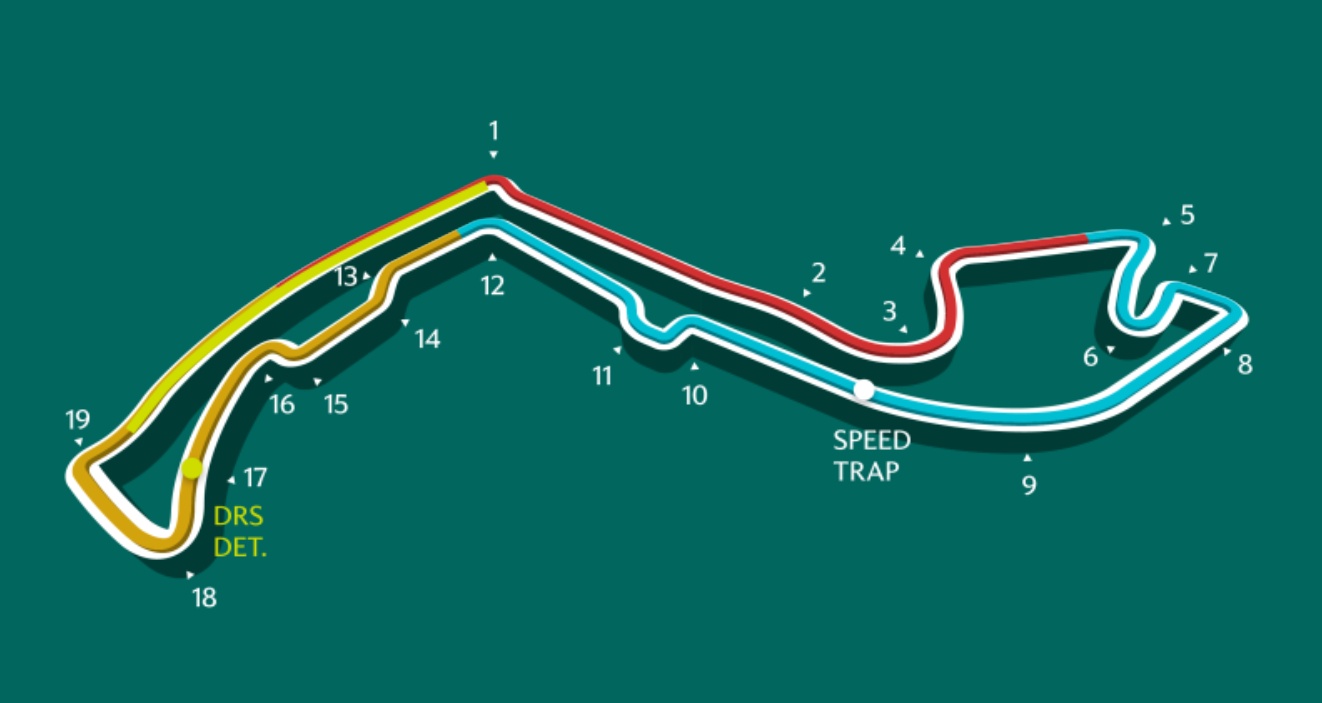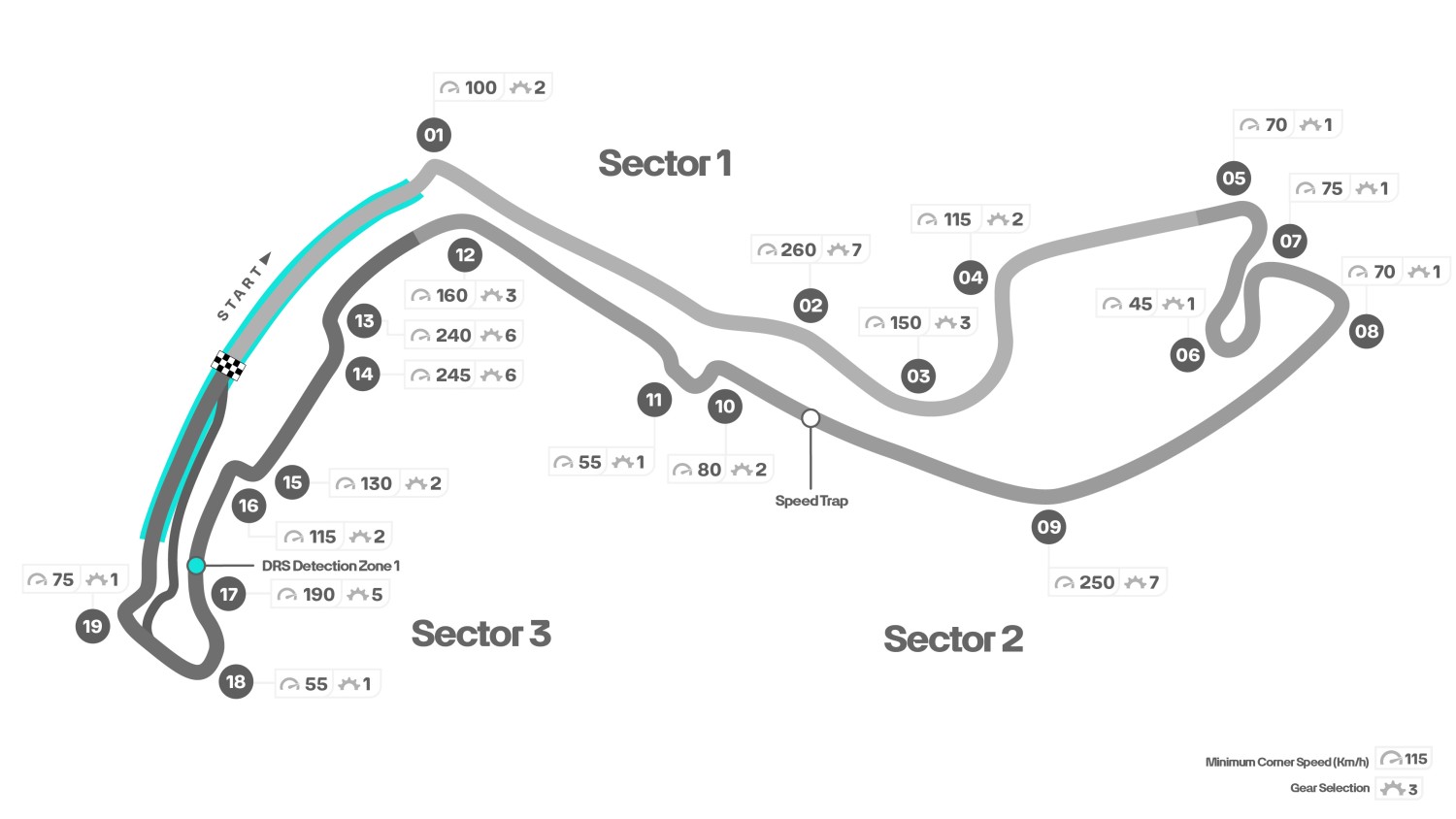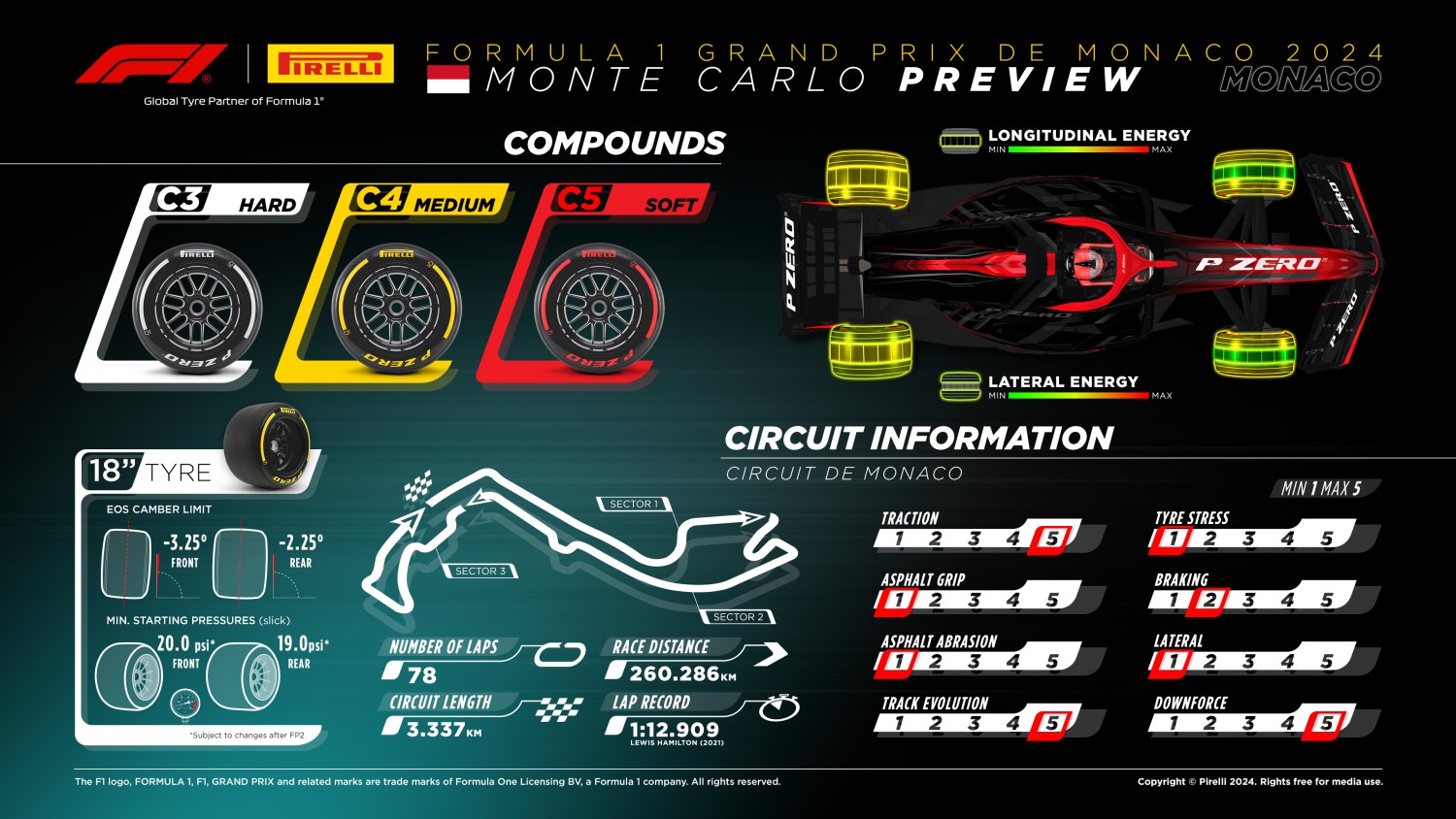Monaco traditionally has been a one-stop race, utilizing the two softest compounds of Pirelli’s range. With no change to the compounds, expect similar again this year. Track position is key here, and car setup will likely prioritize one-lap pace over race pace. The pit time loss is below the season’s average.
Unlocking the Lap
The lap opens with a short run to the first corner, Sainte Devote. The braking point at the end of the start-finish straight is difficult to judge, and the exit is key for the blast up the hill at Beau Rivage. It’s not uncommon to see drivers who have misjudged the braking into this first corner take to the escape road. One of the heaviest braking zones on the circuit, coming at the end of the only DRS zone, Sainte Devote can present an overtaking opportunity but it has been notorious for collisions over the years.

After the famous Fairmont Hotel Hairpin is the tricky Portier section. This double right-hander is fiendishly tricky. The first part requires mounting the pavement for the best line, while the second requires a good exit for the run through the tunnel that follows. It can also be a passing zone if a driver can catch another off guard.
A good lap can very quickly go wrong at the Swimming Pool complex. The first part – a very fast left-right chicane, is one of the most spectacular places to watch a Formula One car. There is no breathing room before the second part – a slightly slower right-left, where it is easy to clip the barrier on entry, or the curb on exit.
Monaco GP Fact File
- This will be the 81st running of the Monaco Grand Prix
- Clocking in at just 3.337 km in length, the Circuit de Monaco is the shortest track on the current F1 calendar. It is the only race that does not adhere to the FIA’s mandated 305 km minimum distance. The next shortest circuit we visit is Zandvoort, which is nearly a full kilometer longer at 4.259 km.
- The race sees the highest lap count of any event with 78 tours of the circuit forming the Monaco Grand Prix. It is the only race that does not adhere to the FIA’s mandated 305 km minimum distance, measuring 260.286 km.
- It also has the shortest run from pole position to the braking zone for the first corner, measuring just 114 meters.
- Just 34% of the lap is spent at full throttle. That is significantly lower than the 43% of the lap at the Autodromo Hermanos Rodriguez in Mexico that is spent at full throttle, the next lowest total on the calendar.
- Taken at just 45 km/h, the hairpin at turn six is the slowest corner F1 cars negotiate across the season. Being the tightest 180° corner on the calendar, special steering racks are used that allow for more steering angle.
- From the seven races in F1’s inaugural 1950 season, only four of them remain on the calendar in 2023: the British, Monaco, Belgian and Italian Grands Prix. All four races take place on the same circuits they did in 1950: Silverstone, Circuit de Monaco, Spa-Francorchamps, and Monza.
- The first-ever Monaco Grand Prix was organized in 1929 by Antony Noghès. The final corner of the circuit is named in his honor.
- The 1996 event holds the record for the F1 race with the fewest finishers. Only podium scorers Olivier Panis, David Coulthard, and Johnny Herbert finished the race.
- Brazilian legend Ayrton Senna took five successive victories at the track between 1989 and 1993.
Sven Smeets, Williams Sporting Director
After a disappointing weekend in Imola, we are looking forward to racing again in Monaco. It’s a unique track where any small mistake is punished immediately, but when all the pieces come together, a lap around Monaco gives you a very rewarding feeling.
As it’s so hard to overtake on this track, it is very important to get the best out of the car in Qualifying. Therefore, the focus for the Free Practice sessions will be getting the right balance between Qualifying and race-pace while building driver confidence.
The tire compounds will be the softest in the Pirelli range, similar to the last race in Imola. The weather forecast predicts unstable conditions over the three days, which will make it difficult to get everything right across all sessions, but also opens opportunities to be better than our direct opponents in the midfield.
It looks like we are heading into a challenging but exciting Monaco weekend
Champion Leader Max Verstappen
Although it was a close race, it was great to get the win in Imola and we now look forward to the second race of the double header. As it is a close street circuit, it is important we hit the ground running and get in a strong qualifying session, as it is always particularly difficult to overtake. The race is often dependent on strategy and requires a lot of concentration and focus. We have been reviewing what we need to do and build on to extract the maximum performance from the car here, so we are looking forward to seeing what the weekend brings. Monaco is always an incredibly busy and hectic weekend so it has been good to come home, relax and recharge before the race. It is always nice to be able to travel home in the evening too, being so close to home.
Related Article: F1: Verstappen dominates wet 2023 Monaco GP
Pirelli Tires
As usual, Pirelli’s choice of slick tire compounds falls to the three softest available this year, which means the C3 as Hard, the C4 as Medium and the C5 as Soft. As is generally the case on street circuits the track has a particularly smooth surface, given it is in daily use for road cars and so the tires must provide as much grip as possible.
In Monaco, the tires are subjected to some of the lowest forces of the whole season as the average speed over the 3.337 kilometer-long track is very slow with some corners taken at less than 50 km/h, while the cars are only at full throttle for 30% of the lap. However, mitigating this low stress level is the fact that, with 78 laps to cover on Sunday, every phenomenon that can characterize tire behavior occurs far more frequently than average, especially when it comes to the level of energy developed when traction is required. Another factor to consider regarding the tires is graining which, especially on the first couple of days, could turn out to be an unwelcome guest.
On a track where the margin for error is pretty much non-existent, one factor which affects how quickly a driver’s lap times come down is the confidence they gradually gain, regardless of how well they know the track, as they tackle its 19 corners and all the other hazards it harbors. The driver must work towards finding the best lines, getting ever closer to the barriers, often brushing them with the shoulder of the tires. The skill is in doing this without breaking anything on the car, and it is the key to securing a good grid position, essential in a race where overtaking is well nigh impossible, even when there is a performance gap between cars that can run into seconds. Qualifying will be even more critical, when this year we have seen the order in which the cars line up behind the starting lights decided by just thousandths of a second.
On a track like this, an appearance from the Safety Car is almost inevitable, with past experience rating it at 77% probable, on average almost twice per race. Although curiously, last year’s race ran smoothly with no neutralization periods. There is really only one strategic option and that is a one-stop, trying to pit as late as possible precisely to benefit from any eventual Safety Car, thus minimizing the time lost in the pit lane.
So far this month, there have been several commemorations for the 30th anniversary of the death of Ayrton Senna, who has very much left his mark on the Monaco Grand Prix. The Brazilian still holds the record for the most wins (6), pole positions (5) and podium finishes (8). Michael Schumacher has set the most fastest race laps (5) and is second equal with Graham Hill on the winners’ standings with five, while these two, along with Lewis Hamilton and Sebastian Vettel are second equal when it comes to podium finishes on seven. With 17 wins, McLaren is the most successful team, while Ferrari has started from pole the most times (12) and set the most (17) fastest race laps and heads the list of podium appearances with 55, more than double that of second placed McLaren on 27.




